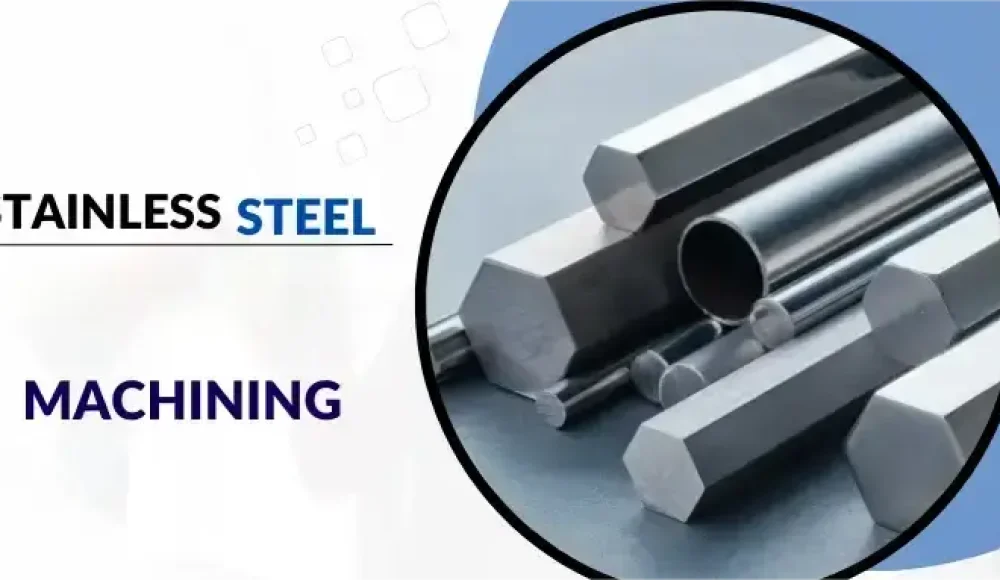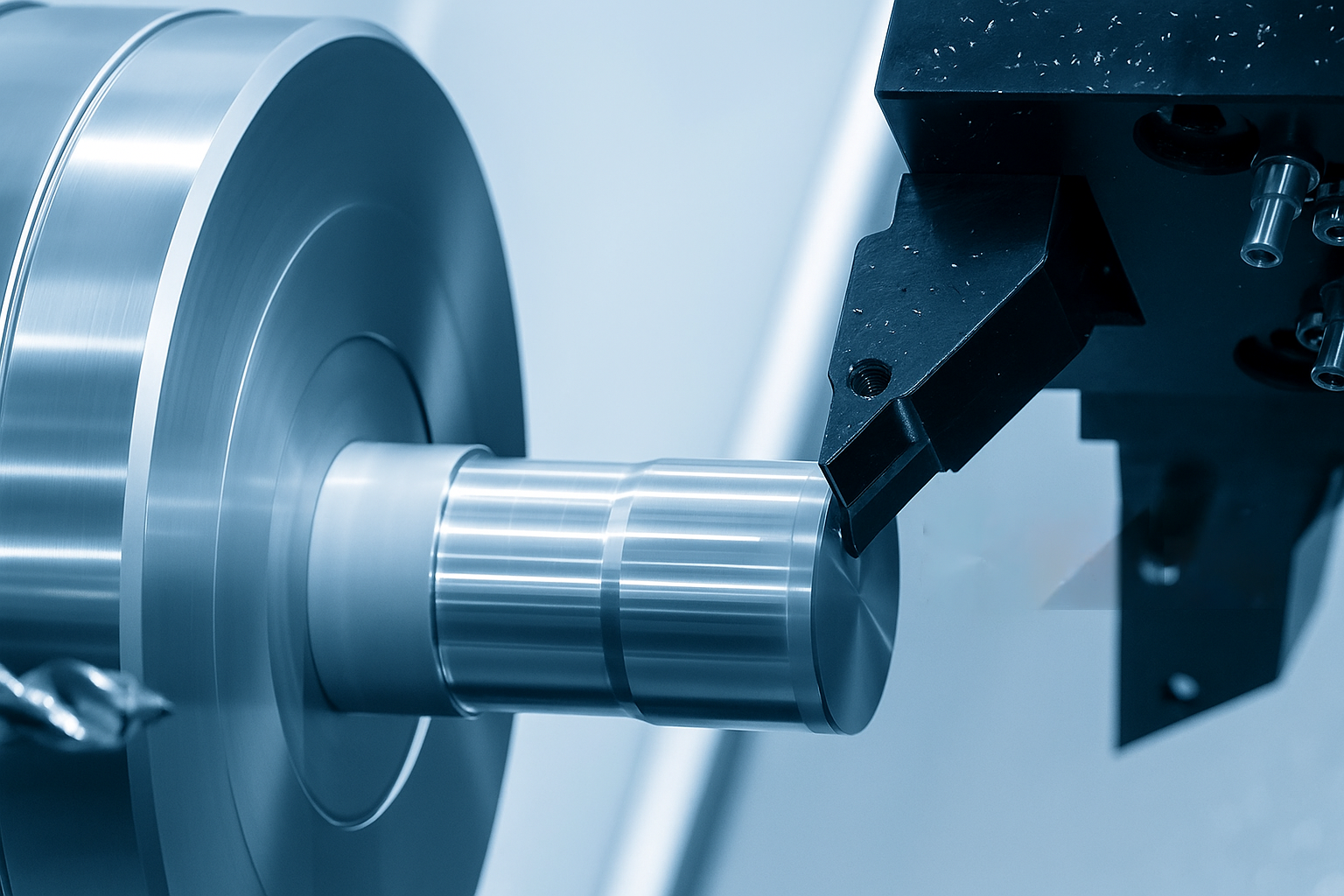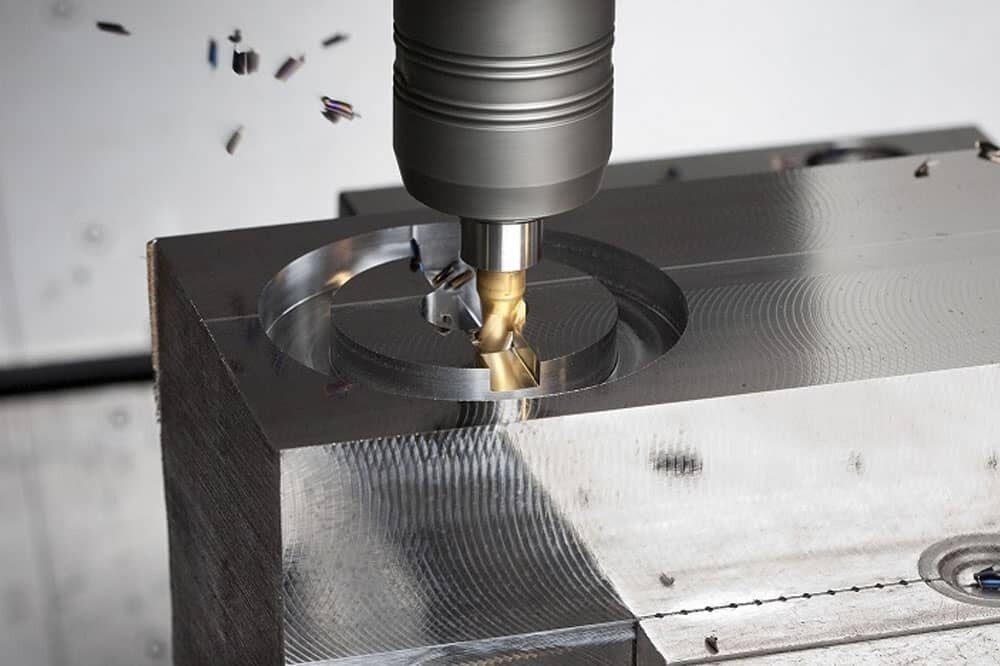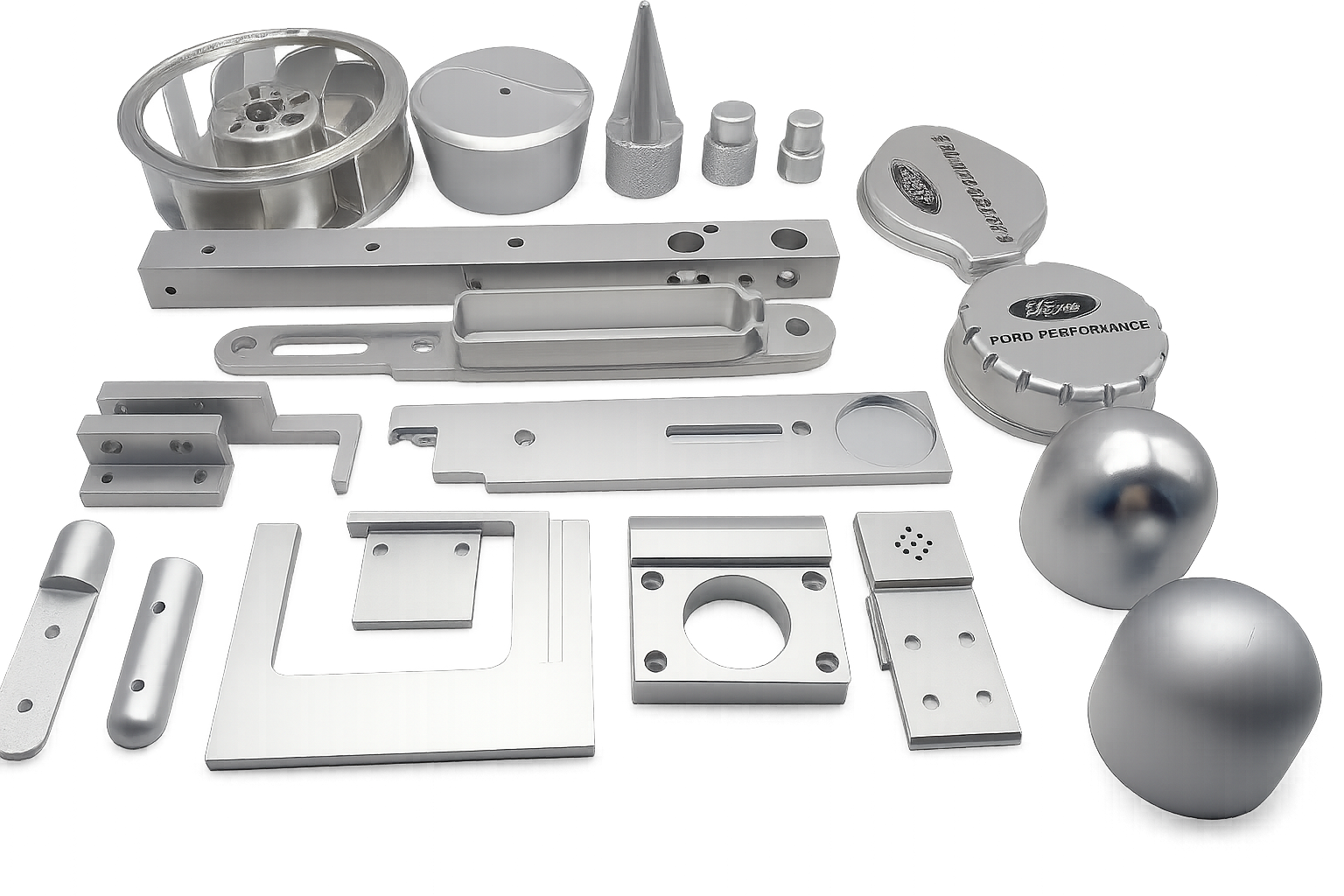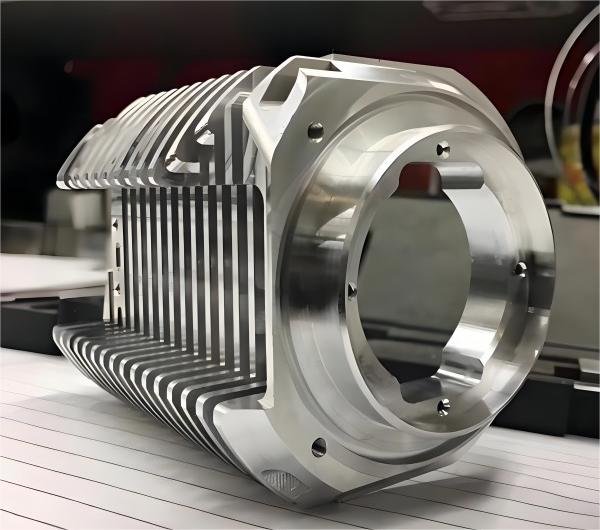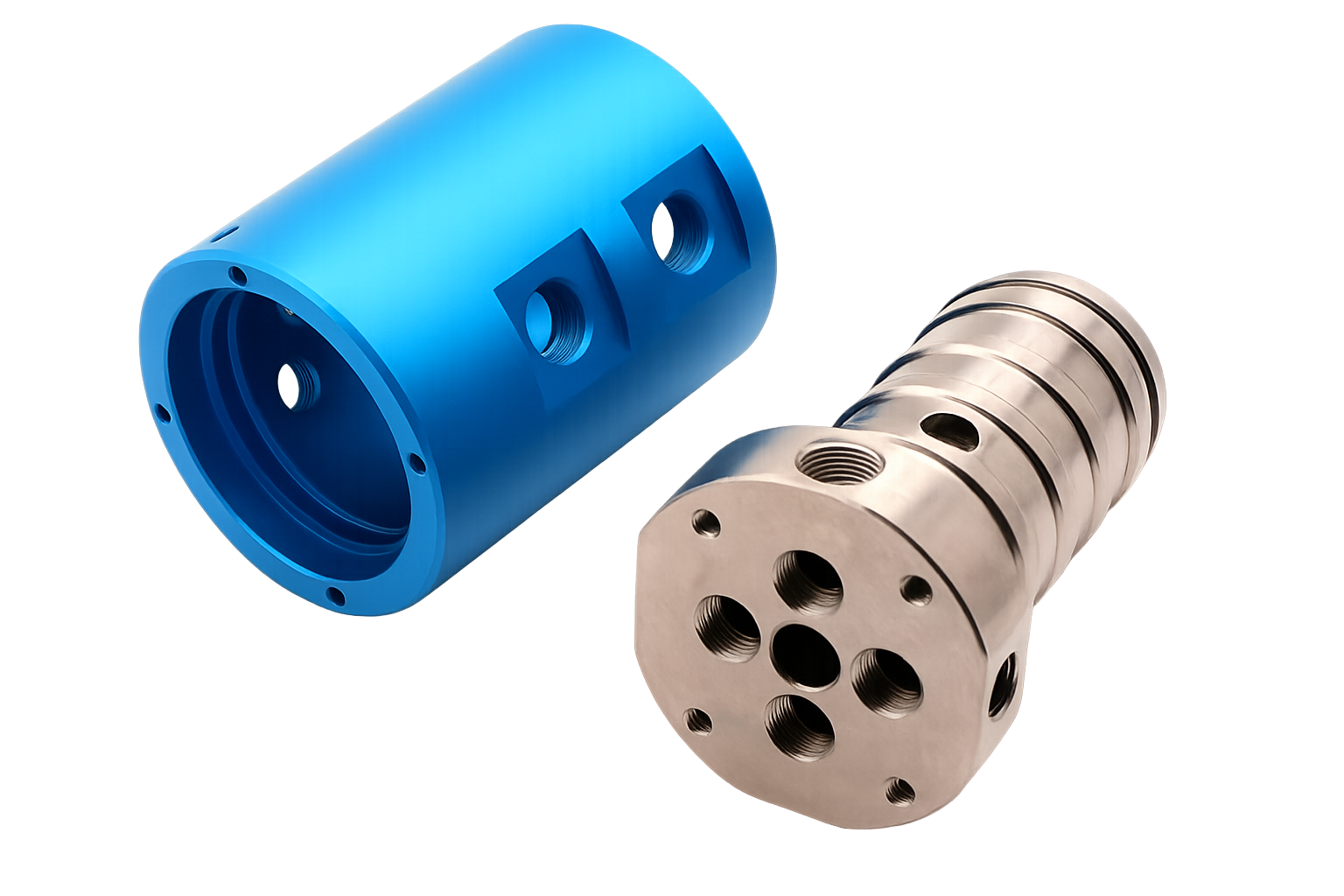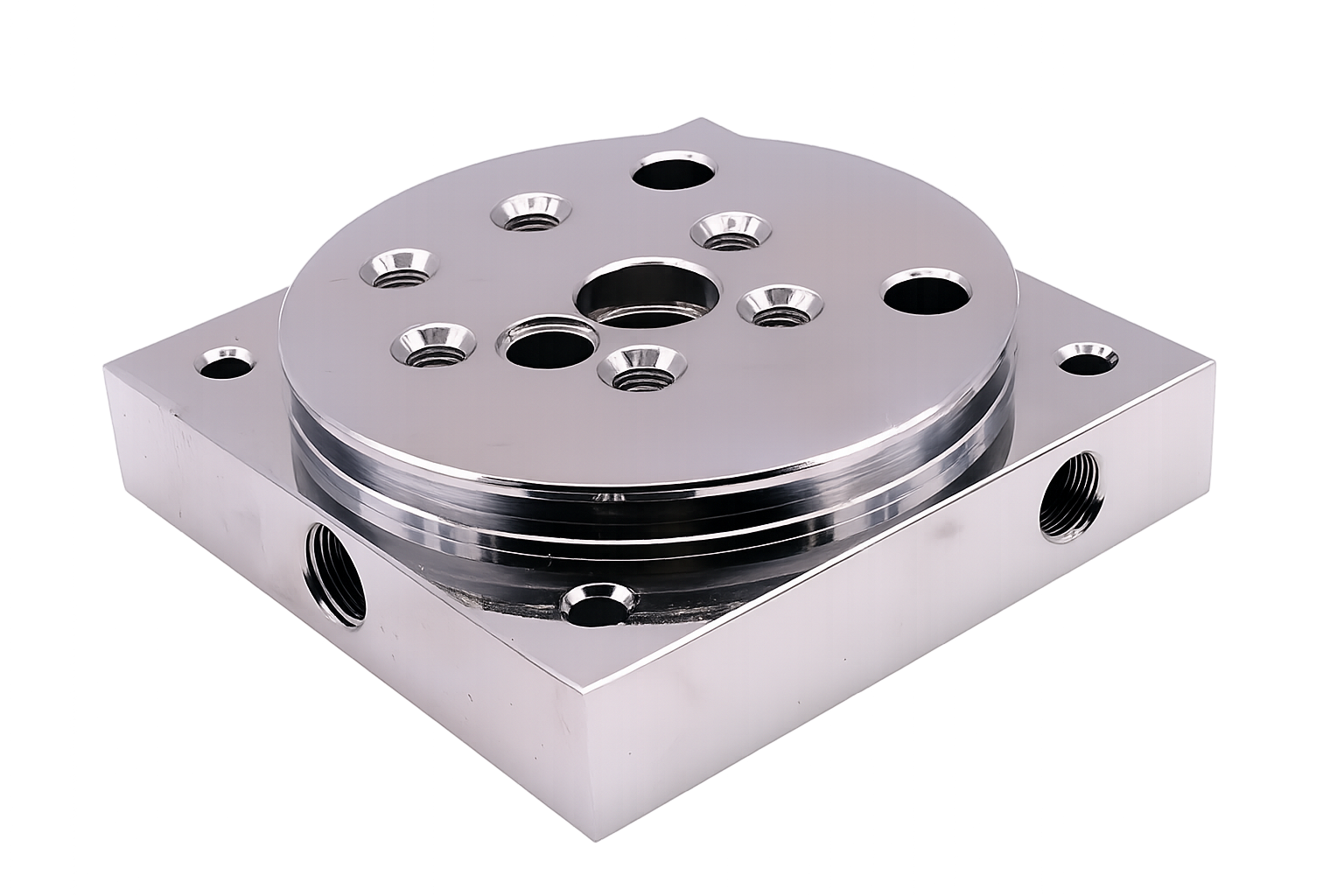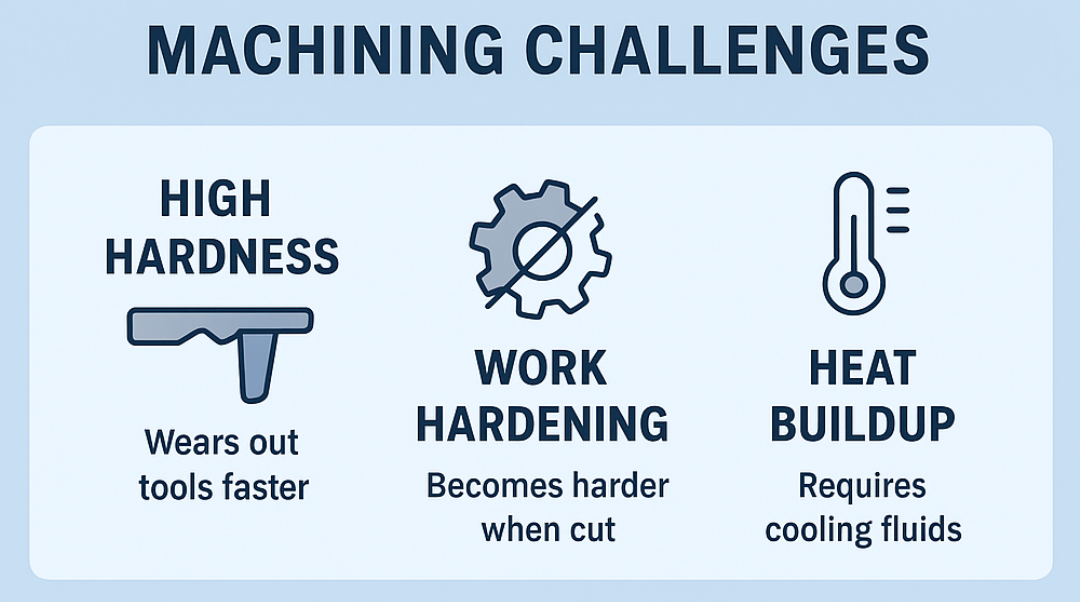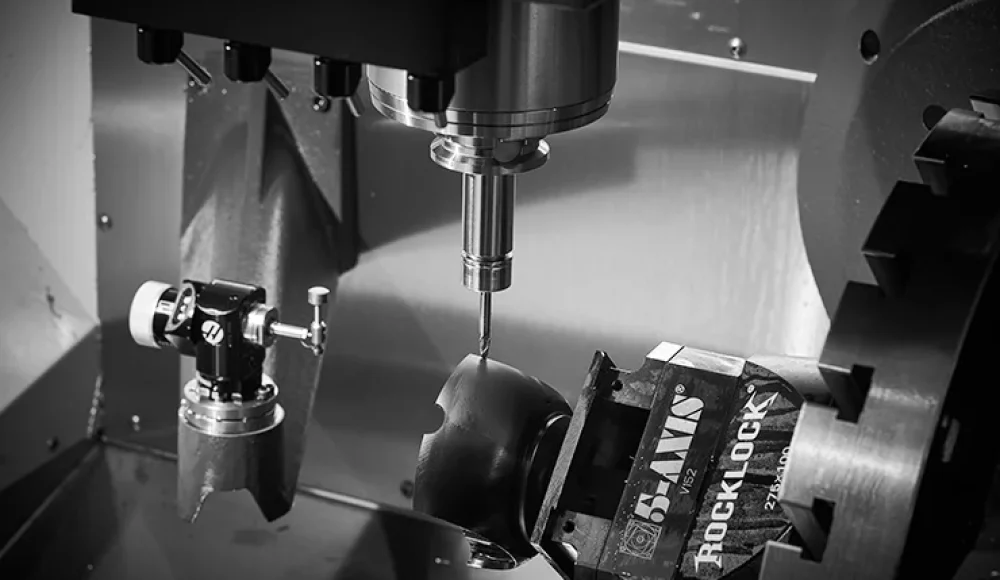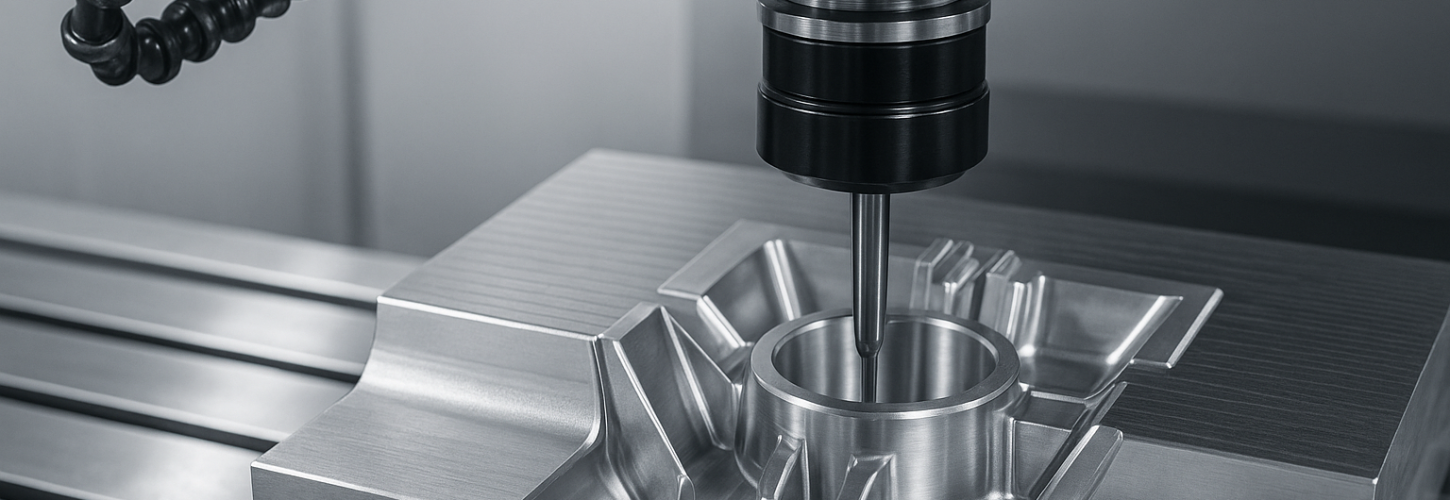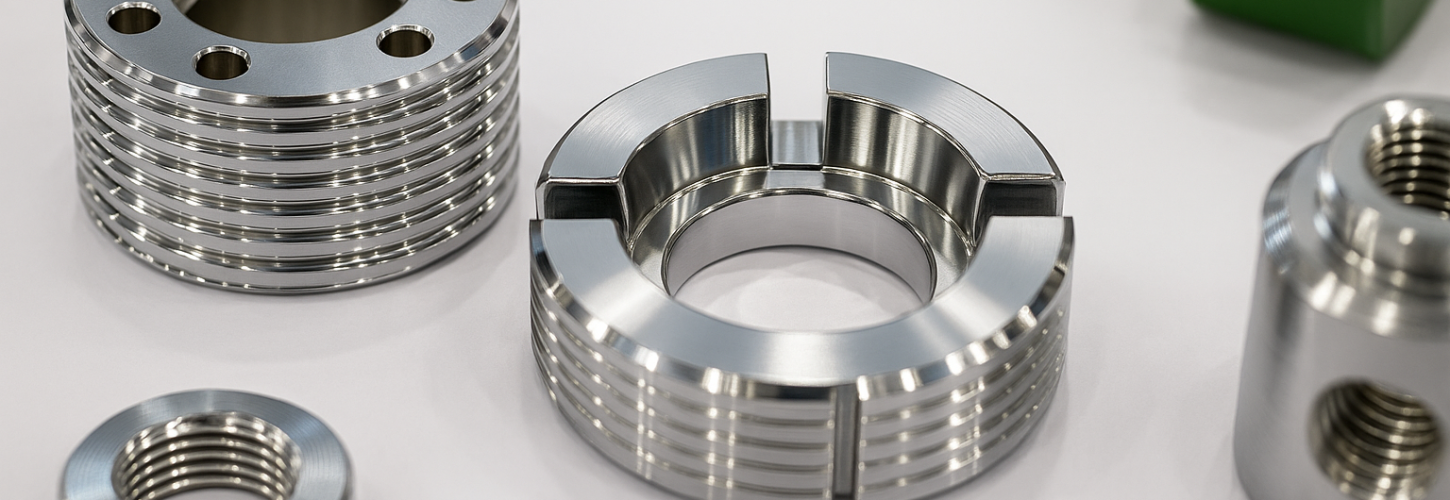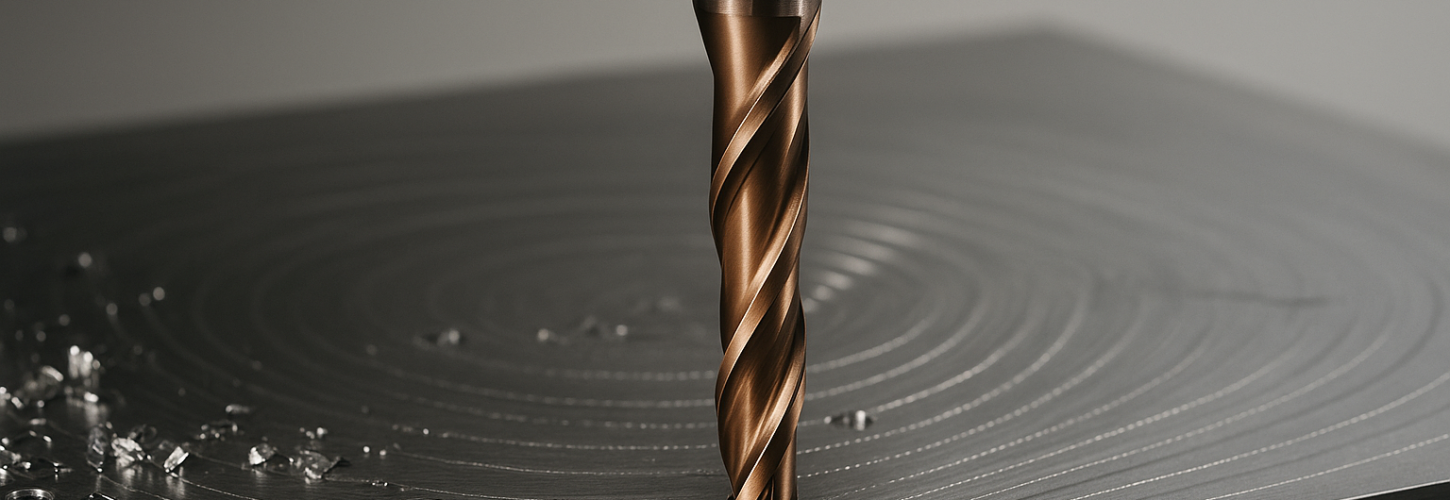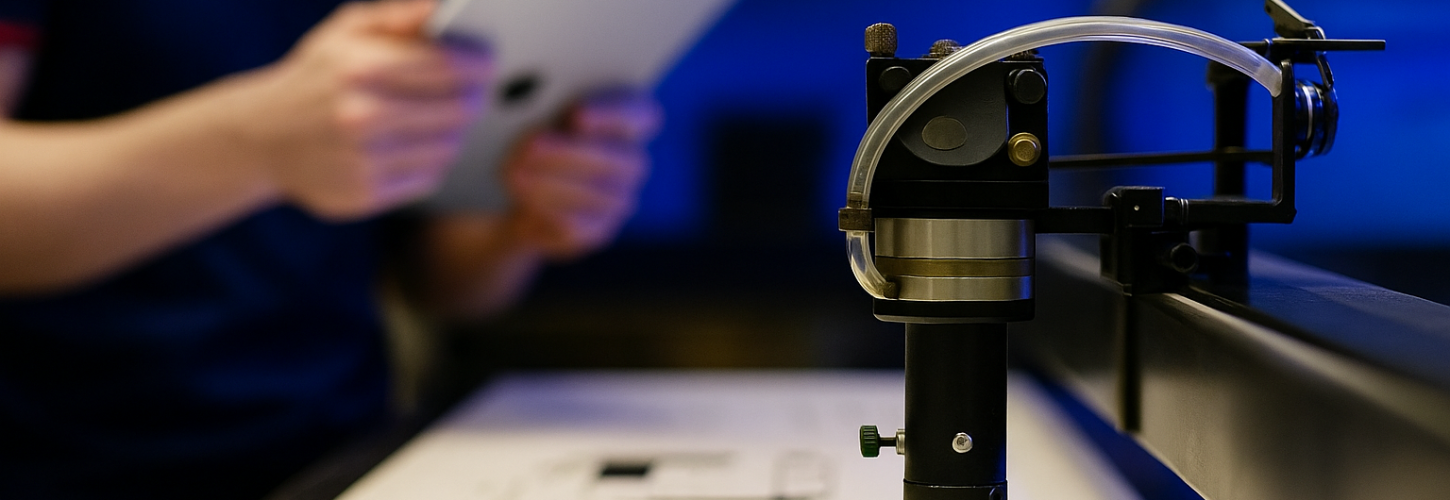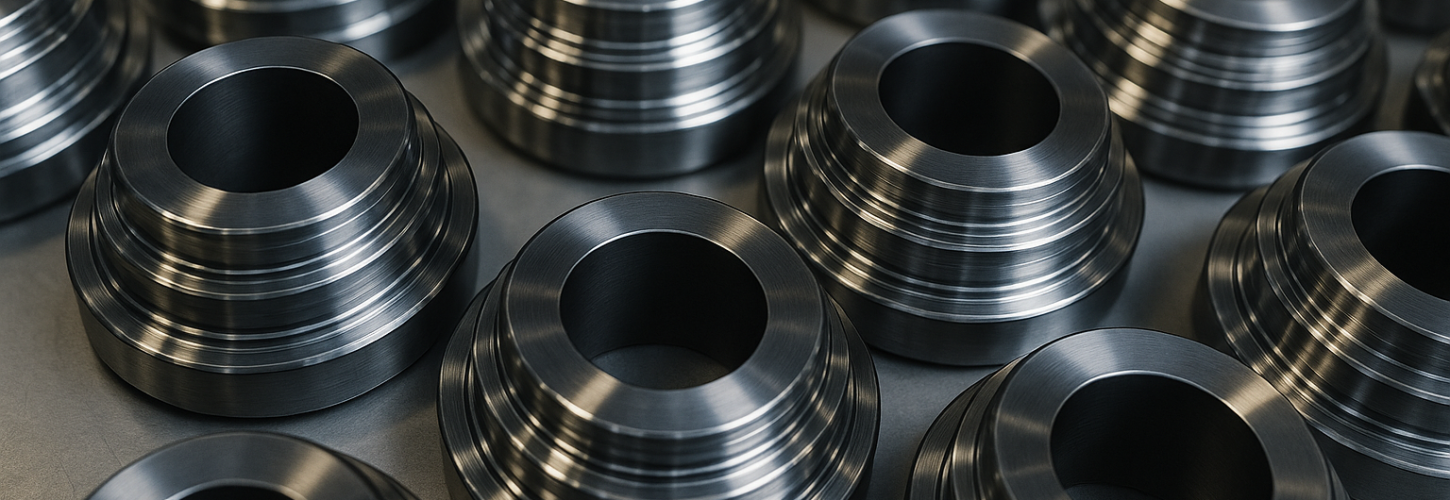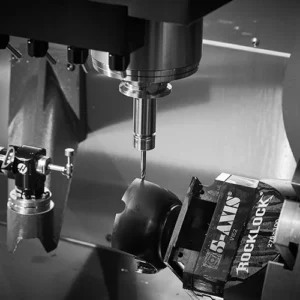Stainless steel is one of the most widely used materials in modern manufacturing. From medical implants and food-processing equipment to aerospace parts and architectural structures, stainless steel has earned a reputation for strength, устойчивост на корозия, and long service life. въпреки това, while it offers outstanding performance in service, machining stainless steel presents unique challenges compared to softer metals like aluminum or brass.
This guide explores the fundamentals of stainless steel machining, the different types of stainless steels, Методи за обработка, difficulties, and expert tips to achieve precision results while minimizing tool wear and production costs.
What Is Stainless Steel?
В основата си, stainless steel is an alloy of iron and chromium, usually containing at least 10.5% хром спрямо теглото. This chromium forms a thin but strong oxide film on the surface, which makes the material resistant to rust and corrosion.
Other alloying elements such as nickel, молибден, манган, титан, and carbon may be added to adjust properties like toughness, обработваемост, and resistance to extreme conditions.
Key properties of stainless steel include:
High strength and toughness
Resistance to corrosion and oxidation
Ability to withstand high and low temperatures
Aesthetic surface finishes (полиран, четка, or matte)
Long service life with minimal maintenance
Can Stainless Steel Be Machined?
The short answer is да, stainless steel can absolutely be machined—but it’s not always as easy as working with softer metals like aluminum or brass. Stainless steel is tough, издръжлив, и устойчиви на износване, which is why it’s so popular in industries like medical, космическото пространство, автомобилен, и преработка на храни. But these same strengths can make it more challenging when it comes to machining.
При рязане на неръждаема стомана, machinists often deal with:
Висока твърдост – It puts more stress on cutting tools and can cause them to wear out faster.
Work hardening – Stainless steel tends to get even harder when it’s being cut, which makes the process trickier if not handled correctly.
Heat buildup – It doesn’t conduct heat away quickly, so tools and parts can get hot fast if cooling methods aren’t used.
Видове неръждаема стомана
Not all stainless steel is the same. Всъщност, има several different types, and each one has its own strengths depending on what you need it for.
Аустенитна неръждаема стомана
This is the most common type—you’ll find it in kitchen sinks, съдове за готвене, and even medical tools.
It’s non-magnetic, лесен за почистване, and very resistant to rust.
Grades like 304 и 316 fall into this group. 316, например, is extra good at resisting corrosion, which is why it’s used in marine environments or chemical equipment.
Феритна неръждаема стомана
This type is magnetic and usually less expensive than austenitic stainless steel.
It’s not as strong against corrosion, but it’s still tougher than plain carbon steel.
You’ll often see it in things like car exhaust systems or indoor appliances.
Мартензитна неръждаема стомана
This one is all about strength and hardness.
It can be heat-treated, making it ideal for knives, ножица, и турбинни лопатки.
The downside? It’s not as corrosion-resistant as austenitic steel, so it needs more care.
Дуплекс от неръждаема стомана
Think of this as a mix between austenitic and ferritic stainless steels.
It has great strength and much better corrosion resistance than ferritic stainless.
It’s commonly used in oil and gas pipelines, химически централи, and other heavy-duty industries.
Precipitation-Hardening Stainless Steel
This is a high-performance group of stainless steels.
They can be heat-treated to become extremely strong while still resisting corrosion.
You’ll often see them in aerospace and defense parts where both strength and durability are critical.
Stainless Steel Machining Processes
Stainless steel is tough, издръжлив, and great for so many uses—but that also means it’s not always easy to machine. Добрата новина? With the right tools and methods, it can be shaped into almost anything.
This is when a cutting tool removes material while the stainless steel part spins on a lathe.
It’s great for making round parts like shafts, болтове, or rings.
Предизвикателството: stainless steel tends to harden as it’s cut, so sharp tools and the right speed are key.
Milling uses rotating tools to cut away layers of stainless steel.
It’s perfect for creating flat surfaces, слотове, или сложни форми.
Because stainless steel can generate a lot of heat, machinists often use охлаждащи тела to prevent tool wear and keep things running smoothly.
Пробиване
Just like it sounds, drilling is making holes in stainless steel.
Regular drills can wear out quickly, so machinists usually go for carbide or coated drill bits that can handle the toughness.
Бавно, steady drilling with cooling fluid makes the best results.
Grinding uses an abrasive wheel to smooth or finish stainless steel surfaces.
This process is especially useful when a Високо прецизно покритие е необходимо, like in surgical tools or aerospace parts.
Рязане
Cutting stainless steel with saws (band saws or circular saws) is common when starting from large blocks or bars.
Special blades are needed, since stainless is harder to cut than mild steel.
Нарязване на резба & Почукване
Machinists often need to cut threads for screws, болтове, или фитинги.
Stainless can be tricky here because it can stick to the cutting tool (a problem called “galling”), but using the right lubricants helps.
After the main machining is done, stainless steel parts are often polished, buffed, or passivated (chemically treated) to improve corrosion resistance and give them a clean, shiny look.
Stainless Steel Machining Applications
Медицински и здравни грижи
Think of surgical tools, импланти, and hospital equipment.
Stainless steel is used here because it’s super hygienic, easy to sterilize, и устойчив на корозия.
например, scalpels, surgical screws, and dental tools are often precision-machined stainless steel parts.
Food and Beverage Industry
Ever wondered why so much kitchen equipment is stainless steel? It doesn’t rust, and it’s safe for food contact.
Machined parts like mixers, processing blades, and valves are common in food factories.
Even coffee machines and breweries rely on stainless steel parts to keep drinks safe and clean.
Космонавтика
Aircraft need materials that can handle стрес, топлина, и корозия.
Machined stainless steel is used in turbine parts, скоби, and fittings that must be lightweight yet strong.
It plays a big role in both airplanes and spacecraft.
Automotive and Motorcycles
автомобили, trucks, and bikes all use stainless steel for parts like exhaust systems, крепежни елементи, and custom components.
In custom motorcycle parts, CNC machining allows riders to get personalized designs that are both tough and stylish.
Масло, Газ, and Energy
In these industries, equipment has to work in harsh, corrosive environments like offshore rigs.
Machined stainless steel valves, помпи, and pipe fittings are essential to keep systems safe and reliable.
Архитектура и строителство
Stainless steel isn’t just functional—it also looks good.
Precision-machined stainless parts are used in парапети, крепежни елементи, and decorative elements that must last for decades outdoors.
Потребителски продукти
Everyday items like watches, kitchen knives, and even high-end appliances often have stainless steel parts.
Machining makes it possible to get that sleek finish and tight tolerances consumers expect.
Surface Finish Options for Stainless Steel Machined Parts
The finish affects not only how the part looks, but also how it performs—things like resistance to rust, ease of cleaning, and overall durability.
Machined Finish (Като машинно обработен)
This is the most basic finish—straight off the CNC machine.
You can still see the tool marks and cutting lines, which is fine for hidden or purely functional parts.
It’s cost-effective but not the smoothest or prettiest option.
Четкано покритие
Gives the stainless steel a matte look with fine lines, kind of like the finish you see on kitchen appliances.
It hides fingerprints well and looks modern.
Often used for motorcycle parts, автомобилни аксесоари, и потребителски продукти.
Полиран (Mirror) Завършете
This one’s all about shine—a bright, reflective surface that looks almost like a mirror.
Great for decorative parts, бижута, or high-end motorcycle accessories.
It takes extra work to get this smooth, so it costs more.
Bead-Blasted Finish
Achieved by blasting tiny glass or ceramic beads at the surface.
The result is a гладко, matte texture that feels silky.
It’s popular when you want a uniform look without any shiny spots.
Powder-Coated Finish
A colored, protective coating applied on top of stainless steel.
Дава на части a издръжлив, scratch-resistant surface and allows you to add custom colors.
Often used in consumer goods, автомобилен, и части по поръчка.
Anodized or Coated Options (for alloys or combined finishes)
While pure stainless steel isn’t anodized like aluminum, it can still be given special coatings (like black oxide or PVD coatings) for added toughness or color.
This is common in tools, ножове, and custom bike parts for a unique look.
Electropolished Finish
A chemical process that removes a thin layer of material, leaving the surface extremely smooth and clean.
Често се използва в медицински, храна, and pharmaceutical equipment because it reduces the chance of bacteria sticking.
Is Stainless Steel Difficult to Machine?
Yes — stainless steel is generally harder to machine than mild steel or aluminum.
Challenges include:
Прегряване – High cutting temperatures lead to tool wear and poor surface quality.
Втвърдяване на работата – The surface becomes harder during machining, increasing cutting forces.
Poor Chip Control – Long, stringy chips can damage parts and tools.
Решения:
Use coolant or cutting fluid to manage heat
Apply coatings (Тиал, TiCN) on tools
Select proper cutting speeds and feeds
Use pickling or passivation post-machining if required
Which Stainless Steels Are Difficult to Machine?
High-carbon stainless steels – Very hard, difficult to cut
Low-carbon stainless steels – More ductile, prone to work hardening
304 неръждаема стомана – Most common grade, but work-hardens rapidly
316 неръждаема стомана – Highly corrosion-resistant but tougher to machine than 304
Which Is the Easiest Stainless Steel to Machine?
The 416 клас (martensitic stainless steel) is widely considered the most machinable. It contains added sulfur for better chip breaking and reduced tool wear.
Като цяло, 400 серия от неръждаема стомана are easier to machine than 300 серия because of their lower ductility.
Tips to Ease Stainless Steel Machining
Choose the Right Tools
Stainless steel is hard on cutting tools, so don’t use cheap or dull ones.
Отидете carbide or coated tools—they last longer and can handle the heat.
Keep your tools sharp. A dull tool will rub instead of cut, which makes things worse.
Slow Down the Speed, But Keep the Feed Steady
Running your machine too fast creates too much heat, which ruins both the tool and the part.
Lower cutting speeds work best with stainless steel.
But don’t go too slow on the feed—if the tool just scratches instead of cutting, it’ll cause work hardening (making the metal even harder to cut).
Use Coolant Generously
Stainless steel builds up heat quickly.
Използване plenty of coolant or cutting fluid helps keep things cool, разширява живота на инструмента, and improves the finish.
Aim the coolant right at the cutting area for best results.
Watch Out for Work Hardening
Stainless steel tends to get harder the more you cut it—this is called work hardening.
To fight this, always make sure your cuts are deep enough to get under the hardened layer instead of just skimming the surface.
Plan for Chip Control
Stainless steel makes long, stringy chips that can tangle around the tool.
Use the right tool geometry or chip breakers to keep chips small and manageable.
This keeps the cutting smoother and safer.
Pick the Right Grade of Stainless Steel
Not all stainless steels are the same. Some, като 303, are designed to be easier to machine, while others like 304 или 316 are tougher.
If you have the choice, go with a grade that’s more machinable—it saves time and money.
Don’t Forget Tool Maintenance
Regularly check your tools and replace them before they wear out too much.
A fresh, sharp tool makes a huge difference in stainless steel machining.
Advantages of Stainless Steel
Изключителна устойчивост на корозия
Високо съотношение на якост към тегло
Variety of finishes (полиран, четка, матова)
Excellent hygienic properties (ideal for medical/food use)
Long service life with minimal maintenance
Fully recyclable
Disadvantages of Stainless Steel
Higher cost compared to mild steel or aluminum
Some grades scratch or dent easily
Tougher grades may be time-consuming to machine
Cheapest Stainless Steel for Machining
The 409 клас (ferritic stainless steel) is one of the cheapest to produce and machine. It has lower chromium content, making it less corrosion-resistant but cost-effective for applications like automotive exhausts.
Best Stainless Steel Machining Services
Choosing the right service provider ensures precision, ефективност, и икономия на разходи. Много производители, като например Най-висока точност, specialize in CNC machining, rapid tooling, and prototyping with stainless steel. They combine skilled engineers, advanced machines, and strict quality control to meet industrial demands across aerospace, медицински, автомобилен, and energy sectors.
Заключение
Stainless steel remains a cornerstone material in manufacturing due to its strength, устойчивост на корозия, и гъвкавост. While it is more difficult to machine than softer metals, the right selection of grade, инструменти, and techniques can deliver outstanding results.
Често задавани въпроси
Q1: Is stainless steel hard to mill?
да, because of work hardening and high strength. Карбидни инструменти, proper feeds, and coolant make the process manageable.
Q2: What is the most common machined stainless steel?
The 304 grade is the most widely used, especially in food, медицински, and architectural industries, though it is harder to machine than some alternatives
Прочетете повече:
Custom Motorcycle Parts with CNC
Guide to Machining Plastics (PVC, PEEK, PTFE, Ацетал)

